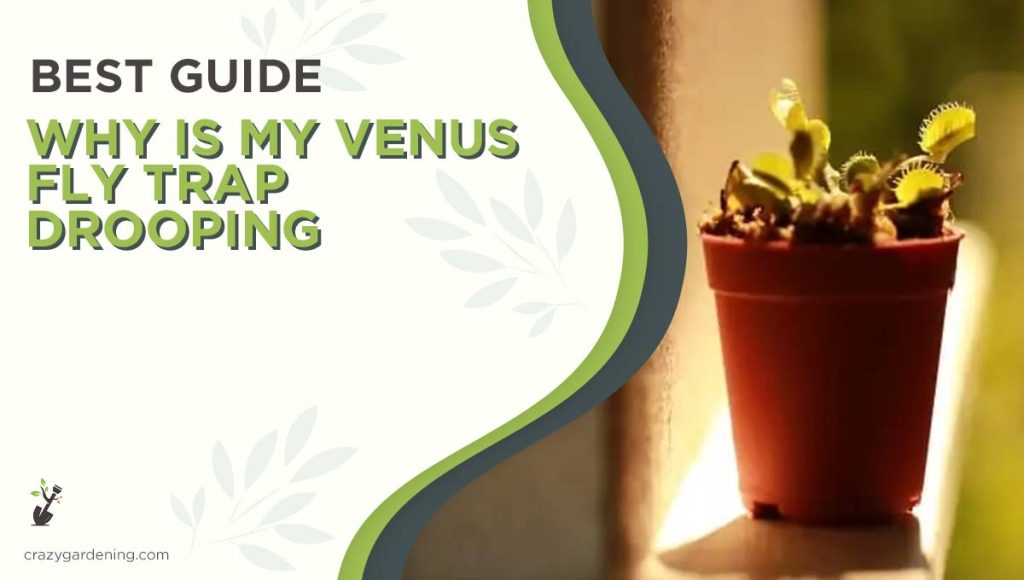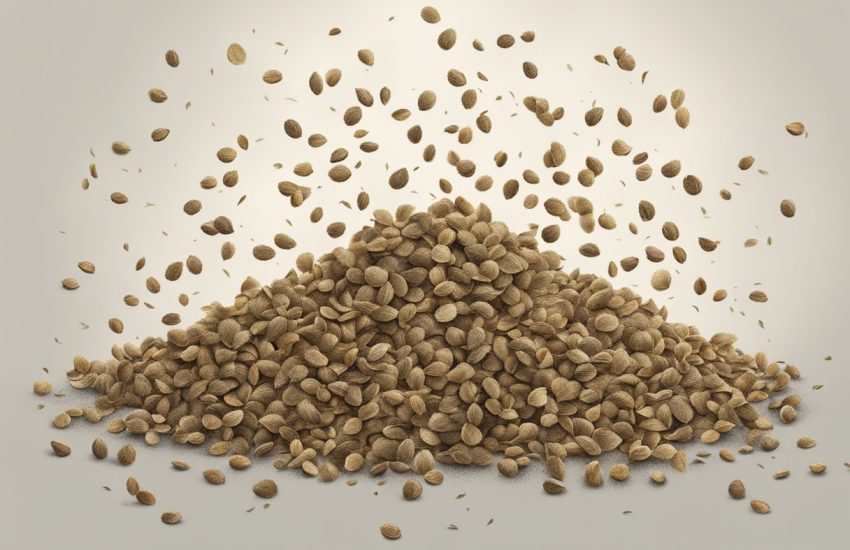Why is My Venus Fly Trap Drooping [Troubleshoot & Fix 2025]
If you’re a gardener, then you know firsthand how important it is to keep an eye on your plants. One second they might be looking healthy and perky, but the next they might be drooping and sad.
So what do you do if your Venus fly trap starts looking a little under the weather?
Your Venus fly trap might be drooping for a variety of reasons. One of the most common causes is over-watering, so make sure you’re not watering it too often. Keep reading to find out!
Why is My Venus Fly Trap Drooping? And How to Fix It?

As we know that many reasons make your Venus fly trap droop, so let’s discuss them in detail.
Wrong Type of Soil
The type of soil you use can also affect how often you need to water your Venus fly trap.
If you’re using a potting mix that doesn’t drain well, then the roots of your plant can become waterlogged, causing the plant to droop.
Make sure you’re using a well-draining potting mix, and water your plant only when the soil is dry to the touch.
Soil composed of 50 percent sand and 50 percent peat moss (or 33 percent sand and 67 percent peat moss) is ideal for Venus Fly Traps.
Also, a mixture of peat moss and perlite that is 4:1 by volume works well.
This is how to utilize sphagnum moss in place of perlite. You can even combine the two into your unique blend (which might also save money).
Peat moss should be selected such that it contains no added fertilizers or lime, the sphagnum, and there is no twigs present.
Not Enough Light
Venus fly traps need a lot of light to stay healthy, so if yours isn’t getting enough, it might start to droop.
Make sure you place your plant in a spot where it will get at least six hours of direct sunlight each day. If you can’t provide enough natural light, you can supplement it with artificial lighting.
Keep in mind, nevertheless, that Venus Fly Traps need a dormant period during which they receive far less water. Your Venus Fly Trap will begin to lose traps and look wilted as the temperature drops.
This is typical, though, because Venus Fly Traps quickly recover and flourish once the winter season ends.
If you have a Venus Fly Trap, make sure to keep it in a cool, dark place during the winter months. This time frame typically spans the months of November through the end of February.
Fluctuating Temperatures
Venus fly traps are native to the Carolina, so they’re used to warm summers and cool winters. If the temperature in your home fluctuates too much, it can stress out your plant and cause it to droop.
Try to keep the temperature in your home as consistent as possible, and avoid placing your plant near drafts or heaters.
Pests
Pests can also be a problem for Venus fly traps. If you see small insects crawling around on your plant, they might be damaging the leaves and causing the plant to droop.
Inspect your plant carefully and remove any pests you find.
If you think your plant is infested, you can also treat it with an insecticide. Be sure to choose a product that’s safe for use on Venus fly traps, and follow the directions carefully.
Over-watering
One of the most common reasons for Venus fly traps to droop is over-watering. These plants don’t need a lot of water, so be sure to only water them when the soil is dry to the touch.
When you do water your plant, be sure to use distilled or rainwater. Tap water can contain chemicals that can damage the plant, so it’s best to avoid it if possible.
If you think you might be over-watering your plant, try to let the soil dry out more between watering. You can also reduce the frequency of your watering, or switch to a potting mix that drains better.
Wrong Type of Water
In addition to over-watering, using the wrong type of water can also damage your Venus fly trap. These plants are native to wetlands, so they’re used to soft water.
Hard water that contains minerals can build up in the soil and damage the roots of your plant. If you use hard water, be sure to let it sit for 24 hours before watering your plant to allow the minerals to dissipate.
You can also use distilled or rainwater to water your plant. This will ensure that your plant is getting the soft water it needs without any added chemicals.
Improper Watering Technique
In addition to using the wrong type of water, you might also be watering your plant improperly.
When you water your plant, be sure to soak the roots and not just the leaves. Water that only hits the leaves can cause them to rot, which can damage the plant.
To water your plant properly, place it in a sink or basin and let the water run over the roots for a few minutes. Be sure to drain any excess water so that the roots are not sitting in the water.
Once the roots have been soaked, you can place the plant back in its pot and continue to water as usual.
Fertilizer
Venus fly traps don’t need a lot of fertilizer, so be sure to use a very diluted solution. Too much fertilizer can damage the roots of your plant, so it’s best to err on the side of caution.
A good rule of thumb is to only fertilize your plant once every two weeks during the growing season. Be sure to use a fertilizer that’s designed for carnivorous plants, and follow the directions carefully.
Too Much Sunlight
While Venus fly traps need a lot of light to stay healthy, too much sunlight can damage the leaves. If your plant is placed in direct sunlight for more than six hours a day, the leaves might start to turn brown and crispy.
If you think your plant is getting too much sun, try moving it to a spot where it will get indirect light for part of the day.
You can also try covering the leaves with a thin layer of cheesecloth to filter out some of the sunlight.
Conclusion
There are many reasons why your Venus fly trap might be drooping. Be sure to check for pests, over-watering, and too much sunlight.
If you’re still having trouble, try switching to distilled or rainwater, and be sure to fertilize your plant carefully. With a little care, your plant should start to look better in no time!
Also Read These Articles
* Philodendron Imperial Red vs Rojo Congo
* Philodendron Dark Lord vs Black Cardinal
* Philodendron Plowmanii vs Mamei](https://plantnative.org/gardening/philodendron-plowmanii-vs-mamei/)[
* Philodendron Narrow Escape vs Jungle Boogie
* Philodendron Cream Splash vs Brasil
FAQs
Question
How do you revive a Venus flytrap?
Answer
If your plant is wilting, has yellow leaves, or is otherwise not looking healthy, it may be dying. If you’re not sure what’s wrong with your plant, try checking for common problems like overwatering, too much sunlight, and pests.
Question
How do I know if my Venus flytrap is dying?
Answer
There are several reasons why your Venus flytrap might look limp. It could be because of overwatering, using the wrong type of water, or not getting enough sunlight. Be sure to check for these common problems and try to correct them.
Question
” Why does my Venus flytrap look limp?”
Answer
A Venus flytrap may become flat if it is not receiving enough sunlight or water, or if it has not caught enough insects for proper nutrition.
Question
What happens if you overfeed a Venus flytrap?
Answer
Overfeeding a Venus flytrap can cause it to develop black spots, yellow leaves, or die back. The plant needs time to digest each meal before catching another.

